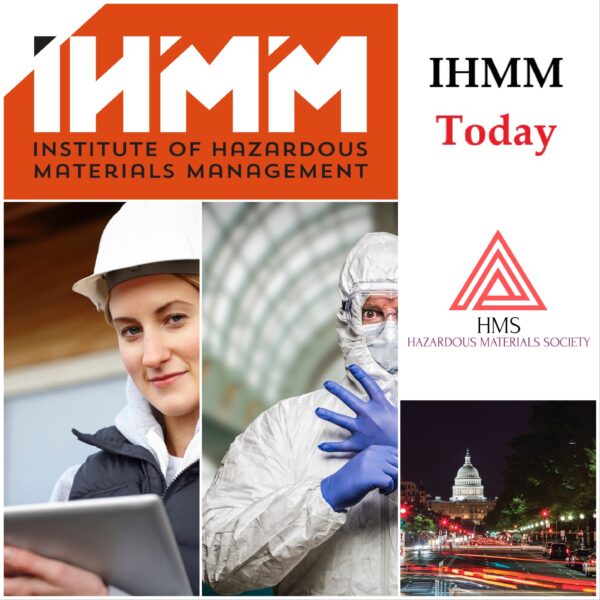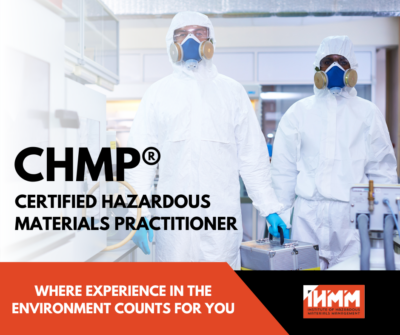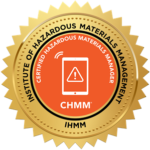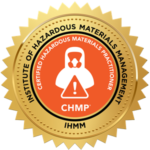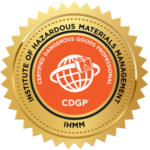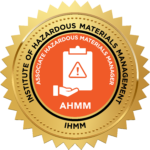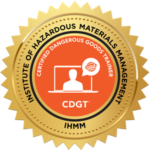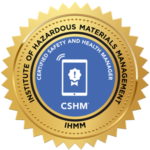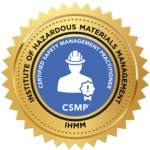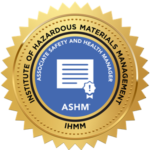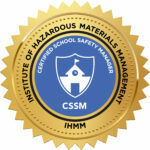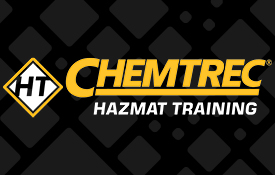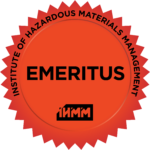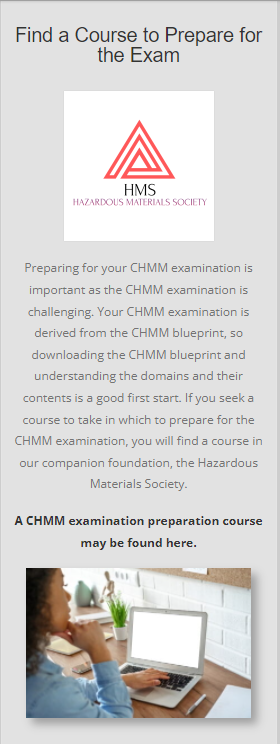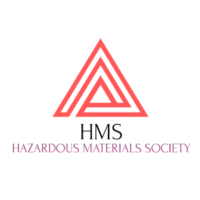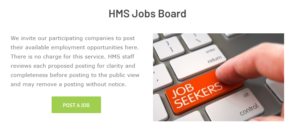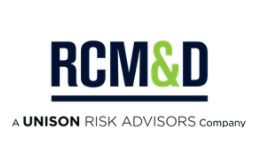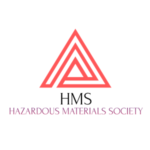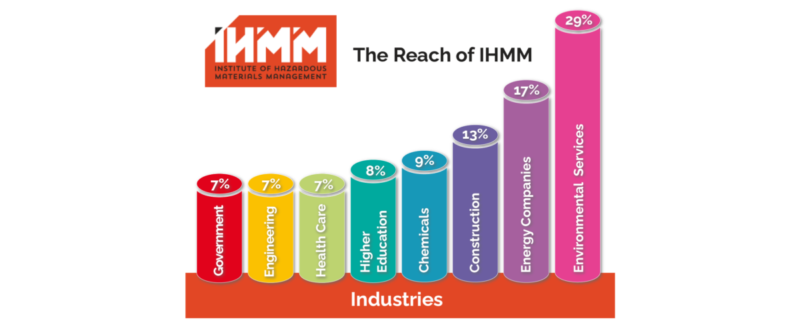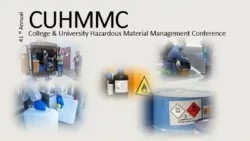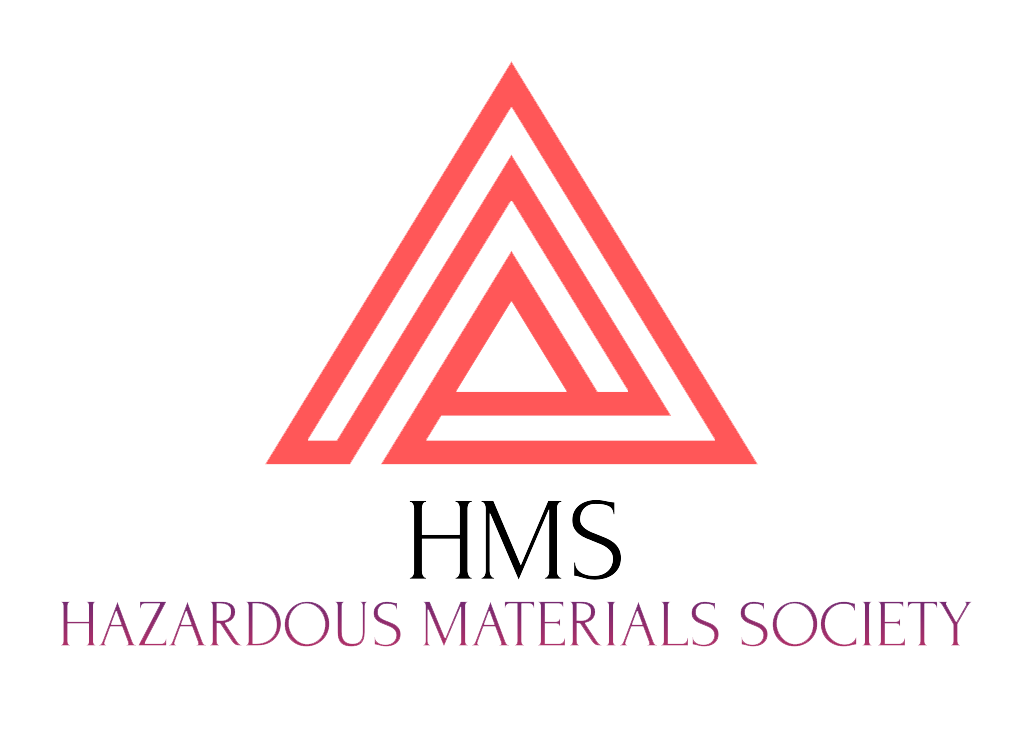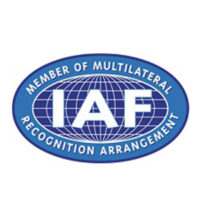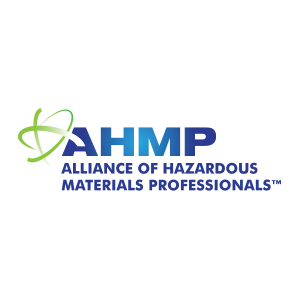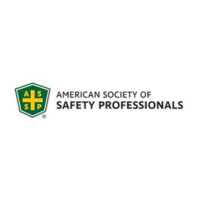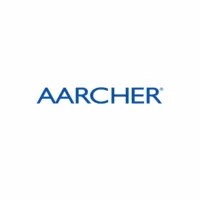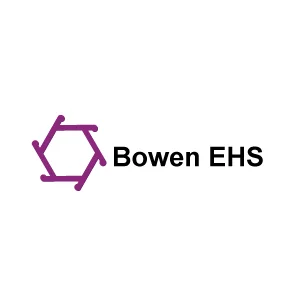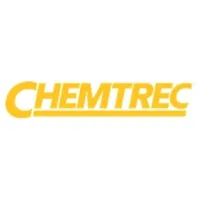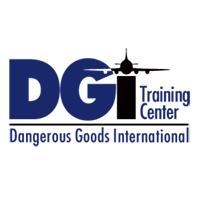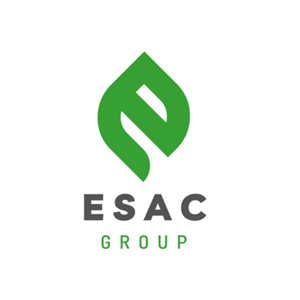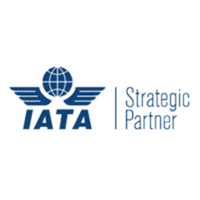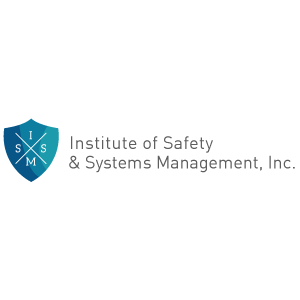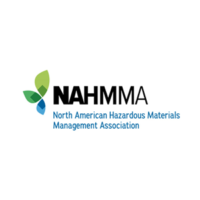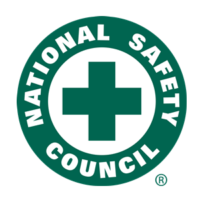Home | IHMM Credentials | Certificants | About IHMM | Event Calendar | Archive | Advertise with IHMM
Certified Hazardous Materials Practitioner® [CHMP®]
IHMM’s Certified Hazardous Materials Practitioner (CHMP®) credential recognizes the highest standard of proficiency for front-line hazardous materials workers. Acquiring the CHMP credential will provide added assurance to both you and your employer of the secure and proper handling and management of hazardous materials in the workplace.
A CHMP® credential signals a level of competence and skill that is in high demand among employers today.
Learn more about the IHMM CHMP
IHMM Credential Recognition
Below you will see the credential badges that are now in each CHMM, CHMP, CDGT, CDGP, AHMM, Student CHMM, CSHM, CSMP, CSSM, ASHM and Student certificant’s MYIHMM account. Every IHMM certificant may use these badges, linked as those below are to their IHMM credential page, for their email signatures, business cards, and other social media applications. You’re justifiably proud of the accomplishment of having earned your credential and you can show the rest of the world. Simply right-click on the badge of choice, then save as to your computer, and then load it to wherever you want to use it, and please link that back to https://ihmm.org/.
Hazardous Materials / Dangerous Goods Transportation Credentials
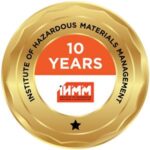
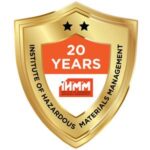
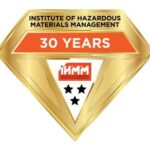
IHMM Certificant Recognition
Throughout our certificant’s MYIHMM accounts are placed 10 Year, 20 Year, and 30 Year badges signifying their longevity as an IHMM certified professional.
With a link from your credential badge to the IHMM website [see above] you can not only stand out as an IHMM-certified professional, you can also promote IHMM credentials to others. Right-click on the badge of choice, save as to your computer, then load it to whatever medium you choose.
IHMM has Distinguished Diplomates and Fellows of the Institute badges to the appropriate people in the MYIHMM database. These two badges are accompanied by lapel pins sent to each of those distinguished by holding these designations.
Follow IHMM

IHMM is in all 50 of the United States and in 85 countries around the World.
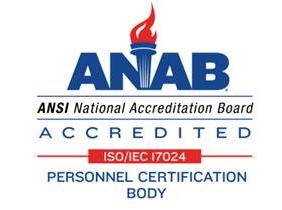
IHMM Credentials Accredited By

NEED HELP?

Need Help? On the IHMM website just click on the “NEED HELP?” button
and let us know what you need and the right person will get right back with you.
Need Help? On the IHMM website just click on the “NEED HELP?” button
and let us know what you need and the right person will get right back with you.
IHMM RECENT NEWS
ADR: The road ahead
Canada updates rail tank car standard
Batteries: Shipping unplugged
EPA issues toolkit aimed at improving composting
Dick’s Sporting Goods bans PFAS in its clothing and other textiles
Federal air monitoring investment could lower southwest Pennsylvania cancer rates
East Palestine fire chief tells NTSB hearing he had 13 minutes to make key decision
Wildfire Smoke Downwind Affects Health, Wealth, Mortality
Environmental Risks and Opportunities of Orphaned Oil and Gas Wells
Implementing Statutory Addition of Certain Per- and Polyfluoroalkyl Substances (PFAS) to the Toxics Release Inventory Beginning With Reporting Year 2023
Announcing the 2024 Chemical Data Reporting Submission Period
EPA Marks National Pollinator Week by Proposing Protections for 27 of the Most Vulnerable Endangered Species, Including Some Pollinators, from Pesticides
EPA Invites Youth to Serve on Agency’s First-Ever National Environmental Youth Advisory Council
NEPA Amendments Aim to Streamline Environmental Review but Largely Codify the Status Quo
‘Accidental Release Reporting Rule’ Requires Owners, Operators to Disclose Chemical Accidents to Chemical Safety Board
Court Rules Against Navajo Water Rights, Statutory Habeas Corpus – SCOTUS Today
Senate Committee Seeks Stakeholder Comment on Draft PFAS Legislation by July 3, 2023
How Does TSCA Define “unreasonable risk of injury to health or the environment”?
EPA Announces 2024 CDR Deadlines
EPA Proposes SNURs for 18 Chemicals Made from Plastic Waste-Based Feedstocks
US Department of Labor, trade groups, unions partnering to protect workers from hazards in trenching, excavation
US Department of Labor invites small business owners, local governments to share input on potential heat standard to protect indoor, outdoor workers
USDOT Proposes Requirements for Real-time Hazmat Information for Firefighters and First Responders to Improve Freight Rail Safety
49 CFR 367 – Fees for the Unified Carrier Registration Plan and Agreement
What is it about construction? Factors driving the industry’s high suicide rate
Can ANSI/ASSP Z16.1 help you move your safety program forward?
Federal investigators find JBS Foods failed to protect Green Bay plant worker from amputations by ignoring required safety standards
Federal investigators find Piedmont Airlines failed to follow required safety procedures to protect ground crew member from suffering fatal injuries
Department of Labor cites entertainment company in Orlando fireworks warehouse blaze, explosion in which 4 workers perished
Texas just nullified water break mandates. How will that impact construction workers?
‘Bench it, shore it, shield it, slope it’: Utility contractors spotlight trench safety
How Today’s Contractors Simplify Workforce Planning
Readers Respond: Contractors call for industrywide air safety mandate
OSHA receives feedback on possible heat standard, asks for more
Recognizing Dust Hazards in the Workplace: Combustible Dusts and Exposure to Poor Indoor Air Quality
HM-263 NPRM: Hazardous Materials – FAST Act Requirements for Real-Time Train Consist Information
NIOSH 2023: Two-Thirds of the Way There!
School threats | NC task force hears plan to keep schools safe, findings into threats
What You Need to Know About Shipping Class 1 Explosives | ICC
Feds hand out $26 million to help find home for nuclear waste
A nuclear site is on tribes’ ancestral lands. Their voices are being left out on key cleanup talks
NY passes ban on dumping radioactive waste in Hudson River
OSHA Wins D.C. Circuit Decision in Machine, Chemical Safety Case
Accidental Release Reporting Rule Focuses on People and Property
A train carrying hazardous materials plunges into Yellowstone River
INSIDE IHMM

IHMM Board of Directors Nominations – Deadline June 30th
IHMM Directors and Officers are volunteers who serve without pay. They may serve up to two, four-year terms. Directors are responsible for the governance of IHMM, including establishing the overall direction of IHMM, the appointment of Executive Director, policy-making, and financial management.
IHMM has two Board seats expiring at the end of 2023. IHMM is soliciting candidates for these two seats; one an At-Large Director seat that may be held by a CHMM, CHMP, CDGP, CSHM or CSMP. One a CSMP Director seat that must be held by a CSMP.
The composition of the present Board is here > https://ihmm.org/board-of-directors/
Qualified candidates may submit nomination papers [self nomination is acceptable] on or before June 30, 2023. The documents for this announcement, procedures, and nomination form are here:
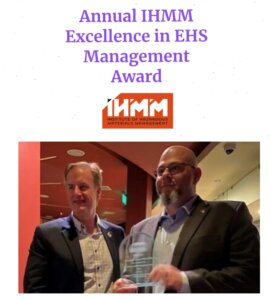
IHMM Excellence in EHS Management Award
The Excellence in EHS Management Award recognizes an individual who has excelled in their role as an EHS manager. The Institute for Hazardous Materials Management [IHMM] will present the award at the annual National Safety Council Expo.
The honoree will receive a commemorative plaque and be recognized in a press release and in IHMM member communications. Travel expenses to the award ceremony will be subsidized. If traveling from overseas IHMM will pay travel expenses from the nearest port of entry.
Nominations will be accepted from March through July of each year and the presentation to the winner will be in conjunction with the National Safety Council Congress and Expo, this year on October 23-25, 2023 in New Orleans.
Make your nominations here >> https://ihmm.org/ehs-management-award/
See previous award winners here >> https://ihmm.org/past-honorees/

A Collaborative Culture
There are 992 different conversations going on in the IHMM/HMS Collaboration platform this week.
A collaborative culture is important for every business but is especially important for our hazardous materials, dangerous goods, environment, health, and safety communities of practice. Do you have a problem you need to solve and want the opinions of your colleagues? This is where we come together to help each other.
IHMM credentialed professionals are at the top 1% of their professions and their reach is global. We are at the forefront of environmental protection, health, and safety and this is where collaborating with the best people in their fields, always willing to help one another, lessens the stress of our jobs, and where we strive as a team to make a difference of which we are proud.
We opened COLLABORATION to enable thousands of certificants and supporters to collaborate together. You can collaborate here.
Access to COLLABORATION is through the same username/password you use to access your MYIHMM account. Having a problem? Contact Jimmy Nguyen at [email protected]
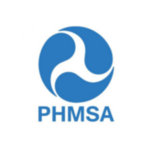
Hazardous Materials: Harmonization With International Standards – IHMM Will File Comments
PHMSA proposes to amend the Hazardous Materials Regulations to maintain alignment with international regulations and standards by adopting various amendments, including changes to proper shipping names, hazard classes, packing groups, special provisions, packaging authorizations, air transport quantity limitations, and vessel stowage requirements.
FR Citation: 88 FR 34568
Published 5/30 comments by 7/31
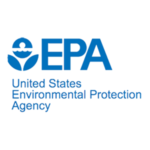
National Oil and Hazardous Substances Pollution Contingency Plan; Product Schedule Listing and Authorization of Use Requirements
The Environmental Protection Agency (EPA or the Agency) is amending the requirements in Subpart J of the National Oil and Hazardous Substances Pollution Contingency Plan (NCP) that govern the use of dispersants, other chemicals and other spill mitigating substances when responding to oil discharges into jurisdictional waters of the United States. This action addresses the efficacy and toxicity of dispersants and other chemical and biological agents, as well as public, state, local, and federal officials’ concerns regarding their use. Specifically, the Agency is amending the Subpart J regulatory requirements for the NCP Product Schedule in two distinct ways. First, the Agency is adding new listing criteria, revising the efficacy and toxicity testing protocols, and clarifying the evaluation criteria for removing products from the NCP Product Schedule. Second, the Agency is amending requirements for the authorities, notifications, and data reporting when using chemical or biological agents in response to oil discharges to Clean Water Act (CWA) section 311 jurisdictional waters and adjoining shorelines. These requirements are anticipated to encourage the development of safer and more effective spill mitigating products and better target the use of these products to reduce the risks of oil discharges and response technologies to human health and the environment. Further, the amendments are intended to ensure that On-Scene Coordinators (OSCs), Regional Response Teams (RRTs), and Area Committees (ACs) have sufficient information to support agent authorization of use decisions.
DATES:
This final rule is effective on December 11, 2023.
ADDRESSES:
The EPA has established a docket for this action under Docket ID No. EPA–HQ–OPA–2006–0090. All documents in the docket are listed on the http://www.regulations.gov website. Although listed in the index, some information is not publicly available, e.g., CBI or other information whose disclosure is restricted by statute. Certain other material, such as copyrighted material, is not placed on the internet and will be publicly available only in hard copy form. Publicly available docket materials are available electronically through http://www.regulations.gov.
FOR FURTHER INFORMATION CONTACT:
For general information, contact the Superfund, TRI, EPCRA, RMP, and Oil Information Center at 800–424–9346 or TDD at 800–553–7672 (hearing impaired). In the Washington, DC metropolitan area, contact the Superfund, TRI, EPCRA, RMP, and Oil Information Center at 703–412–9810 or TDD 703–412–3323. For more detailed information on this final rule contact Gregory Wilson at 202–564–7989 ( [email protected]) or Vanessa Principe at 202–564–7913 ( [email protected]). The contact address is U.S. Environmental Protection Agency, Office of Emergency Management, Regulations Implementation Division, 1200 Pennsylvania Avenue NW, Washington, DC 20460–0002, Mail Code 5104A, or visit the Office of Emergency Management website at http://www.epa.gov/oem/.

EPA Updates TSCA CBI Requirements
The U.S. Environmental Protection Agency (EPA) published on June 7, 2023, a final rule with new and amended requirements concerning the assertion and treatment of confidential business information (CBI) claims for information reported to or otherwise obtained by EPA under the Toxic Substances Control Act (TSCA). 88 Fe d. Reg. 37155. The final rule notes that amendments to TSCA in 2016 included many new provisions concerning the assertion, EPA review, and treatment of confidentiality claims. The final rule includes procedures for submitting such claims in TSCA submissions. It addresses issues such as substantiation requirements, exemptions, electronic reporting enhancements (including expanding electronic reporting requirements), maintenance or withdrawal of confidentiality claims, and provisions in current rules that are inconsistent with amended TSCA. The rule also addresses EPA procedures for reviewing and communicating with TSCA submitters about confidentiality claims. The final rule will be effective August 7, 2023. For a more in-depth review of the final rule and our insightful commentary, please read the full memorandum.
Read more >> https://www.lawbc.com/regulatory-developments/entry/epa-updates-tsca-cbi-requirements
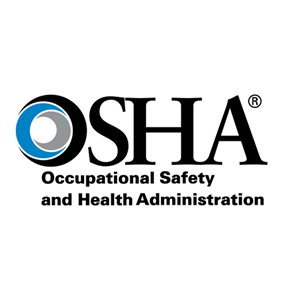
US Department of Labor Invites Small Business Owners, Local Governments to Share Input on Potential Heat Standard
The Occupational Safety and Health Administration (OSHA) invites small business owners and representatives from local government entities to join a series of upcoming discussions on the potential impacts of a workplace heat standard on small businesses.
Currently, OSHA is developing a potential standard for workplaces — in which the agency has jurisdiction — to prevent heat illness and injury in outdoor and indoor environments in general industry and in the construction, maritime and agriculture industries. As part of its process, OSHA is holding Small Business Advocacy Review Panel meetings to gather views on the potential effects of a heat standard on small businesses. The meetings will be held in teleconferences where small businesses can share concerns and discuss current practices for protecting their employees from heat-related illnesses and injuries. The discussions will be open to the public.
In October 2021, OSHA published an Advance Notice of Proposed Rulemaking for Heat Injury and Illness Prevention in Outdoor and Indoor Work Settings in the Federal Register, initiating the rulemaking for OSHA to consider a heat-specific workplace standard. OSHA has also taken several actions to protect workers from the dangers of excess heat in the workplace, including:
- Developing an enforcement initiative on heat-related hazards.
- Launching a National Emphasis Program on heat inspections.
- Creating a National Advisory Committee on Occupational Safety and Health Heat Injury and Illness Prevention Work Group.
- Launching a Heat Illness Prevention campaign to educate employers and workers on the dangers of working in the heat.
For more information, please see the OSHA Trade Release.

OSHA Seeks Feedback on Effectiveness of Leading Indicators to Improve, Develop Resource Tool
The U.S. Department of Labor’s Occupational Safety and Health Administration is asking for stakeholder input on their current use of leading indicators and their impact on managing their safety and health management systems. Leading indicators are proactive and preventive measures that can provide insight on the effectiveness of safety and health activities and reveal potential problems. They are vital in reducing worker fatalities, injuries, illnesses, and financial impacts.
As OSHA considers developing a Leading Indicators Resource, the agency welcomes stakeholders to share their experience and expertise and provide detailed feedback on how/where they are used at their workplace. OSHA is interested in various perspectives on stakeholders’ answers to questions, such as the following:
- What leading indicators do you use?
- What lagging indicators do you use (OSHA incident rates, for example)?
- What leading indicators are, or could be, commonly used in your industry?
- What metrics do you share with top management?
- How do you determine the effectiveness of your leading indicators?
- Do you link your leading indicators to outcome data, such as OSHA incident rates to evaluate results?
- How could employers be encouraged to use leading indicators in addition to lagging indicators to improve safety management systems?
- What barriers and challenges, if any, have you encountered to using leading indicators?
Individuals may submit comments at regulations.gov by July 17, 2023, which is the Federal eRulemaking Portal, identified by docket number OSHA-2023-0006. For more information, see the OSHA Trade Release.

2022 TRI Reporting Deadline Is July 1, 2023 — What Is New This Year?
Each year about this time, companies are focused on the deadline to submit Toxics Release Inventory (TRI) data to the U.S. Environmental Protection Agency (EPA). This year is no different as the July 1, 2023, deadline is rapidly approaching. By this date, entities subject to the reporting requirement must submit data for activities that occurred during 2022. Companies are required to report if they meet chemical activity thresholds and are either in a covered industry sector and exceed the employee threshold; or are specifically required to report based on a determination by EPA under the Emergency Planning and Community Right-to-Know Act (EPCRA) Section 313(b)(2). EPA’s TRI Threshold Screening Tool can help companies determine if they are subject to TRI reporting. The tool uses a step-by-step questionnaire to help companies determine whether they meet or exceed the facility, employee, and chemical thresholds established by EPA. For more information, please read the full memorandum.
Read more >> https://www.lawbc.com/regulatory-developments/entry/2022-tri-reporting-deadline-is-july-1-2023-what-is-new-this-year

PHMSA – Announces ICR Renewal for IBC’s and Portable Tanks
The agency published a request for comment on its plan to request renewal of six separate control numbers/ICR’s dealing with the manufacture, testing, and certification of both IBC’s and Portable Tanks. This will primarily affect manufacturers of such packagings.
SUMMARY: In accordance with the Paperwork Reduction Act of 1995, PHMSA invites comments on six Office of Management and Budget (OMB) control numbers pertaining to hazardous materials transportation. PHMSA intends to request renewal for these six control numbers from OMB. DATES: Interested persons are invited to submit comments on or before July 21, 2023. ADDRESSES: You may submit comments identified by the Docket Number PHMSA–2023–0029 (Notice No. 2023– 07) by any of the following methods: •Federal eRulemaking Portal: http:// www.regulations.gov. Follow the instructions for submitting comments.
Read more >> https://www.govinfo.gov/content/pkg/FR-2023-05-22/pdf/2023-10857.pdf

FMCSA: Agency Information Collection Activities; Renewal of Currently Approved Information Collection: Hazardous Materials Safety Permits
The agency is renewing an ICR titled, ‘‘Hazardous Materials Safety Permits.’’ This ICR requires companies holding safety permits to develop communication plans that allow for the periodic tracking of hazardous materials shipments. A record of the communications that includes the time of the call and location of the shipment may be kept by either the driver (e.g., recorded in the logbook) or the company. These records must be kept, either physically or electronically, for at least 6 months at the company’s principal place of business or readily available to the employees at the principal place of business.
Read more >> https://www.govinfo.gov/content/pkg/FR-2023-06-08/pdf/2023-12255.pdf

Perchloroethylene (PCE); Regulation Under the Toxic Substances Control Act (TSCA)
The Environmental Protection Agency proposes to ban most uses of perchloroethylene (PCE) and to require a workplace chemical protection program for PCE uses that are not banned. The proposed ban would prohibit manufacturing, processing, and distribution of PCE for consumer uses; prohibit most industrial and commercial uses of PCE; and create workplace protections for the remaining uses. Comments due August 15.

The EPA has published new guidance related to the characterization of waste related to lithium batteries
The agency has published new guidance related to the characterization of waste related to lithium batteries. This important guidance lays out several standards and how the agency interprets them. It features a lengthy “FAQ” list that attempts to address what the agency believes are the most common and pertinent questions related to how lithium batteries are to be considered and treated as part of potential waste streams. Battery users that dispose of, recycle, or reuse such batteries may be affected, so it’s important to have a look. See the new guidance here:
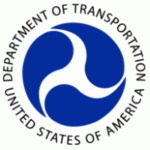
USDOT Proposes Requirements for Real-time Hazmat Information for Firefighters and First Responders to Improve Freight Rail Safety
USDOT Proposes Requirements for Real-time Hazmat Information for Firefighters and First Responders to Improve Freight Rail Safety
Proposal Adds to Several Actions USDOT Has Taken to Improve Freight Rail Safety
WASHINGTON –The U.S. Department of Transportation’s Pipeline and Hazardous Materials Safety Administration (PHMSA) today announced it is proposing a new rule aimed at improving public safety and preventing environmental impacts by strengthening requirements governing railroads’ provision of hazardous materials information to responders during a hazmat incident. The proposal would require railroads to always maintain — and update in real-time — accurate, electronic information about rail hazmat shipments in a train consist that would be accessible to authorized emergency response personnel. Railroads would also be required to proactively “push” that information to authorized local first response personnel as soon as the railroad is aware of an accident involving any hazardous materials.
“When railroads transport hazardous materials, they must do so safely and responsibly,” said U.S. Transportation Secretary Pete Buttigieg. “Our proposal would improve rail safety and help protect communities across the country by requiring railroads to maintain detailed, real-time information about trains carrying hazardous materials.”
“On-demand access to key information about hazmat shipments coupled with proactive information sharing will enable first responders to better prepare for the risks present at the scene of an incident BEFORE they arrive on scene,” said PHMSA Deputy Administrator Tristan Brown. “This will improve safety for firefighters and first responders, and the communities they so courageously serve.”
“Fire fighters are often first to show up at many emergencies, including train derailments and HazMat incidents. Accurate, up-to-date information about train contents is critical to keep first responders and the communities they serve safe. The IAFF strongly supports the Department of Transportation’s new rule that would give fire fighters real-time data allowing for safer responses. We applaud the DOT for prioritizing fire fighter and public safety,” according to Edward A. Kelly, General President, International Association of Fire Fighters.
PHMSA and the Federal Railroad Administration (FRA) have taken several additional actions to improve freight rail safety. That includes making more than $25 million in funding available to help train first responders and strengthen safety programs and issuing safety advisories to railroad companies about replacing tank car covers and urging a faster transition from DOT-111s to DOT 117s rail cars.
The Notice of Proposed Rulemaking (NPRM) would require all railroads to generate, in hard copy and electronic versions, real-time train consist information for shipments containing hazardous materials. Required information would include the quantity and position of the shipment on the train, the shipment’s origin and destination, and a designated emergency point of contact at the railroad.
The proposal responds to congressional mandates in the FAST Act, National Transportation Safety Board (NTSB) recommendation providing electronic train consist information to emergency officials and personnel that respond to hazmat incidents for railroads, as well as lessons learned from firefighters responding to the February 2023 Norfolk Southern derailment in East Palestine, OH. Consistent with the broad scope of the NTSB recommendation, PHMSA’s proposal goes beyond the FAST Act mandate that had been limited to Class 1 railroads and extends these new proposed requirements to all railroad classes and requires proactive notification to local first responders in the case of an accident or an incident involving a release or suspected release of a hazardous material.
The proposed rule has been transmitted to the Federal Register. A publication date will be provided when it becomes available along with an opportunity to provide public comment.
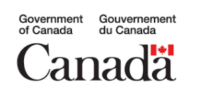
Bill to Modernize CEPA Receives Royal Assent
Bill S-5, Strengthening Environmental Protection for a Healthier Canada Act (the Act), received Royal Assent on June 13, 2023. According to Environment and Climate Change Canada’s (ECCC) Backgrounder, the Act modernizes the Canadian Environmental Protection Act, 1999 (CEPA) and represents the first set of comprehensive amendments to CEPA since it was enacted over 20 years ago. It also makes related amendments to the Food and Drugs Act. The Act was initially introduced in the 43rd Parliament in April 2021 as Bill C-28, but it was not considered due to the federal election in September 2021. Under the Act, ECCC will develop a new plan of chemical management priorities and will propose a new regime to manage toxic substances of highest risk. Canada will create a publicly available “Watch List” of substances determined to be capable of becoming toxic under CEPA to inform Canadians and businesses of substances that they may wish to avoid. This memorandum provides a summary of the amendments and new measures in the Act. For more information, please read the full memorandum.
Read more >> https://www.actagroup.com/regulatory-developments/entry/bill-to-modernize-cepa-receives-royal-assent

Spring 2023 OSHA Regulatory Agenda
As part of our efforts to keep you informed of OSHA’s activities, we wanted to let you know that the Department of Labor, including OSHA, has issued its Spring 2023 Regulatory Agenda. Federal agencies post their regulatory agendas on the Reginfo.gov website and Mobile.Reginfo.gov twice a year to provide a snapshot of their rulemaking priorities.
A listing of Department of Labor (including OSHA) rulemaking in the pre-rule, proposed rule, and final rule stages is available here. Rules that are classified as long-term actions are listed here.

Protecting Workers During National Safety Month
June marks the beginning of National Safety Month, which focuses on raising public awareness of the leading safety and health risks for workers and aims to decrease the number of injuries and fatalities in workplaces. While safety is important year-round, observances such as National Safety Month are paramount to raising awareness about safety and health hazards and creating an environment where workers and organizations can put safety first.
A safety-first workplace environment focuses on eliminating the leading causes of preventable injuries and deaths. By creating awareness of the risks and hazards and educating workers to conduct tasks safely, solutions can be made to help eliminate on-site risks.
In safety plans, PPE should be considered the last line of defense against injury. But while it is viewed as the last line of defense, it is still crucial to have head-to-toe PPE. Indeed, head-to-toe protection starts at the top. This National Safety Month, let’s review the head, face and eye protection needed when it comes to staying protected on the job.
Read more >> https://ohsonline.com/articles/2023/06/01/protecting-workers-during-national-safety-month.aspx?admgarea=magazine&m=1
–OHS
Beltway Buzz – Ogletree Deakins
Summer Arrives, but Congress Eyes Fall Deadlines. This week, the U.S. Congress wrapped up an extended period in Washington, D.C., before heading out for a two-week recess for the Independence Day holiday. In the wake of the Fiscal Responsibility Act, appropriators spent much of their time this week working on the various bills that theoretically must be passed to fund the federal government beyond September 30, 2023. Funding for the federal government, as well as the military, will be addressed in the next big policy debates on Capitol Hill that will unfold over the summer and early fall. The Buzz will be watching to see where labor and employment issues—such as potential confirmation votes for nominees such as Julie Su (nominated to be U.S. secretary of labor)—will fit in Congress’s busy schedule.
Nominations: Federal Judicial Update. On June 21, 2023, the U.S. Senate confirmed Natasha C. Merle to serve as a district judge of the U.S. District Court for the Eastern District of New York. The confirmation marks the 100th district judge confirmed by the Senate during the Biden presidency. As of this week, the Senate had confirmed 136 federal judges (pursuant to Article III of the U.S. Constitution), including Ketanji Brown Jackson, who in April 2022 was confirmed as an associate justice of the Supreme Court of the United States, 35 judges to the U.S. courts of appeals, and 100 judges for the U.S. district courts. In comparison, at the same time during the Trump presidency, the Senate had confirmed two associate Supreme Court justices (Neil Gorsuch and Brett Kavanaugh), 41 judges to the U.S. courts of appeals, and 80 district court judges.
POTUS Renominates EEOC Chair. President Biden has renominated U.S. Equal Employment Opportunity Commission (EEOC) chair, Charlotte Burrows, to serve a third term. Burrows began serving on the EEOC in 2015 and was renominated for a second term that ends on July 1, 2023. However, as long as her nomination is pending, Burrows may continue to serve until the Senate adjourns sine die (likely at the end of the calendar year). Also pending in the Senate is Kalpana Kotagal’s nomination to serve as a commissioner of the EEOC and Karla Gilbride’s nomination to serve as EEOC general counsel.
PWFA on the Way. Signed into law on December 29, 2022, the Pregnant Workers Fairness Act (PWFA) goes into effect next week—on June 27, 2023. The PWFA requires the EEOC to promulgate implementing regulations by December 29, 2023, but the Commission hasn’t even issued a regulatory proposal yet. The absence of a notice of proposed rulemaking prompted Senator Bill Cassidy (R-LA)—the U.S. Senate Committee on Health, Education, Labor and Pensions’ (HELP) ranking member and the lead Republican co-sponsor of the PWFA—to criticize the Commission two weeks ago. The Commission has released a basic guidance document on the law.
AI Developments. It was another busy week on the artificial intelligence policy debate front. Here is the latest:
- Senator Schumer calls for comprehensive framework. During a speech at a Washington, D.C., think tank this week, Senate Majority Leader Chuck Schumer (D-NY) unveiled his road map for developing comprehensive artificial (AI) legislation. Schumer called the plan the “SAFE Innovation Framework for AI Policy.” Schumer explained that while innovation must be our “north star,” it must be informed by “Security, Accountability, protecting our Foundations, and, lastly, Explainability.” Interestingly, Schumer called for a new legislative process because “[t]he traditional approach of Committee hearings play[s] an essential role but won’t, on [its] own, suffice.” He promised that later this year he would convene a series of “AI insight forums” with industry experts to help develop the process and policy.
- Legislators seek bipartisan AI commission. This week, a bipartisan group of legislators introduced the National AI Commission Act. The bill would create a national AI commission—composed of ten legislators from each party—to study and recommend “any governmental structures that may be needed to oversee and regulate artificial intelligence systems, including the feasibility of an oversight structure that can oversee powerful artificial intelligence systems with a general purpose through a careful, evidence-based approach.”
Senate Committee Advances Labor and Employment Bills. This week, the Senate HELP Committee advanced, on 11–10 party-line votes, three labor and employment bills.
- The Paycheck Fairness Act (S. 728) would
- rewrite employers’ affirmative defenses to make it harder to demonstrate that nondiscriminatory factors account for pay differentials;
- allow plaintiffs to recover compensatory and unlimited punitive damages;
- make it easier for plaintiffs to bring and maintain class actions;
- require employers to submit employee compensation data to the EEOC and Office of Federal Contract Compliance Programs (OFCCP); and
- prohibit employers from asking about or using job applicants’ wage histories.
- The Healthy Families Act (S. 1664) would require employers with fifteen or more employees to allow employees to accrue up to seven days of paid sick leave per year.
- The Richard L. Trumka Protecting the Right to Organize Act of 2023 (S. 567), which the Buzz has discussed extensively, would turn current federal labor law on its head to favor labor unions.
With the legislative filibuster in place, the bills are unlikely to garner the sixty votes needed to pass the Senate.
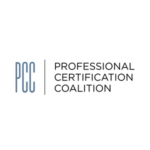
Professional Certification Coalition
IHMM is a member of the PCC. The PCC monitors state and federal legislative and regulatory activity affecting professional certification on an ongoing basis. The PCC has compiled several “Watchlists” identifying and analyzing provisions in pending legislation at both the state and federal level that, under applicable rules, may still be enacted in the current legislative session. Depending on the carry-over rules in the relevant legislature, the charts listing current legislation may include bills introduced in a prior year. In addition, the PCC compiles each year a chart of enacted legislation that affects certification. The charts include hyperlinks to every bill or executive order. Note that the Watchlist and the Enacted Legislation document do not include profession-specific legislation and do not include regulatory initiatives. The charts will be updated as needed based on new developments.
Other State and Federal Activities
In this section we will highlight other state and federal government affairs activities undertaken by the committee.
Current Priorities June-August 2023
PHMSA – Hazardous Materials: Harmonization With International Standards – IHMM Will File Comments – Docket No. PHMSA-2021-0092 (HM-215Q)
NY Department of Labor rulemaking concerning the recognition of the CSHM and CSMP. IHMM’s comments concerning initiating this rulemaking are here
Work with Eric Vega in Puerto Rico concerning credential recognition
Review of the Governor of Nevada’s Executive Order concerning licensing boards and potential for recognition of the CHMM. IHMM’s comments on the Governor’s Executive Order are here
Scheduling meetings with the Maryland Congressional delegation concerning the Certified Pandemic Preparedness Specialist [CPPS] credential
IHMM Credential Recognition
The highest priority of IHMM’s Government Affairs Committee is the recognition of IHMM’s credentials by government. We have made substantial progress in the two years we have undertaken this endeavor, as outlined in detail here > https://ihmm.org/credential-recognition/
In this project we have 45-in-5, increasing the number of states that recognize IHMM credentials.
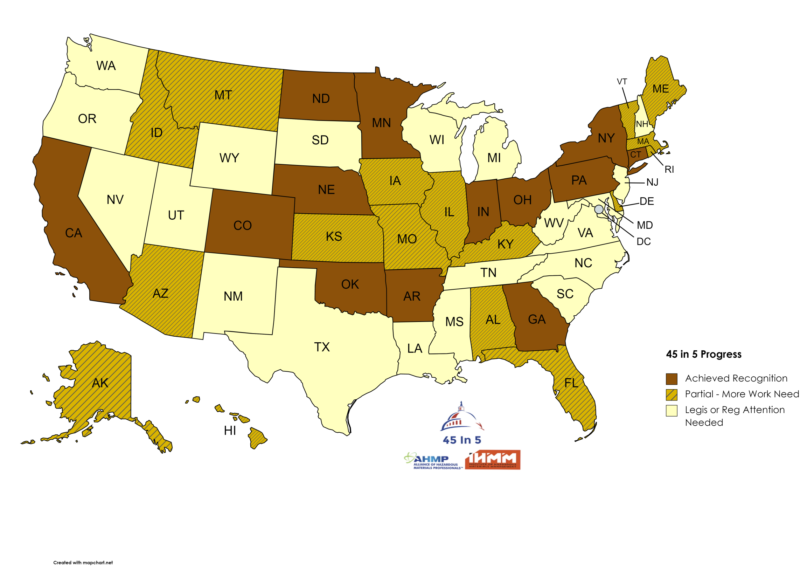
- We have already succeeded in 13 states – New York, Connecticut, Pennsylvania, Indiana, California, Colorado, Nebraska, Minnesota, Arkansas, Oklahoma. Ohio, North Dakota, and Georgia. [Red states in the map above]. These are states where IHMM credentials are cited or 40 CFR 312.10 is cited by reference.
- We have partially succeeded in another 16 states – Alaska, Hawaii, Idaho, Montana, Arizona, Kansas, Iowa, Missouri, Illinois, Kentucky, Florida, Delaware, Rhode Island, Massachusetts, Vermont, and Maine. [Orange/Black Stripe states in the map above] These are states where the requirements of an “environmental professional” or QEP are cited that coincide with an IHMM credential so that relatively little work would need to be done to clarify the desired outcome.
- We have 21 states where no reference to an IHMM credential is made in either statute or regulation, nor is there anything defined in the area of an environmental professional. These states will require legislation or regulatory work. [Yellow states in the map above].
in January 2022 Gene Guilford released the 40 CFR § 312.10 EPA regulation that states a private certification that meets or exceeds the requirements of the regulation is an Environmental Professional under the regulation. Here is the crosswalk between the 40 CFR § 312.10 EPA regulation and the Certified Hazardous Materials Manager [CHMM] blueprint. The CHMM meets or exceeds the requirements of an Environmental Professional.
Here’s what we ask each volunteer to do:
- Watch legislative and regulatory developments in your state that provide an opportunity for us to create amendments or other interventions
- Be willing to speak with regulators and legislators in your area about the recognition efforts we craft together

Regulatory Updates
| DateSort ascending | SubjectSortable column | Document TypeSortable column | Part |
|---|---|---|---|
| 05/30/2023 | Hazardous Materials: Harmonization With International Standards | Proposed Rule | 171, 172, 173, 175, 176, 178, 180 |
| 05/26/2023 | Hazardous Materials: Notice of Applications for Modification to Special Permits | Notice | |
| 05/26/2023 | Hazardous Materials: Notice of Applications for New Special Permits | Notice | |
| 05/26/2023 | Hazardous Materials: Notice of Actions on Special Permits | Notice | |
| 05/26/2023 | Hazardous Materials: Adjusting Registration and Fee Assessment Program; Notice of Public Meeting | Notice | |
| 05/22/2023 | Hazardous Materials: Information Collection Activities | Notice | |
| 05/18/2023 | Pipeline Safety: Gas Pipeline Leak Detection and Repair | Proposed Rule | 191, 192, 193 |
| 05/05/2023 | Safety of Underground Natural Gas Storage Public Meeting | Notice | |
| 04/26/2023 | Hazardous Materials: Adoption of Miscellaneous Petitions and Updating Regulatory Requirements | Proposed Rule | 107, 171, 172, 173, 178, 180 |
Notice of Public Meetings in 2023 for International Standards on the Transport of Dangerous Goods
PHMSA’s Office of Hazardous Materials Safety will be hosting public forums in advance of four international meetings, to allow the public to give input on current proposals being considered by the International Civil Aviation Organization’s (ICAO) Dangerous Goods Panel (DGP) and the United Nations Sub-Committee of Experts on the Transport of Dangerous Goods (UNSCOE TDG). The international meetings include:
- The 62nd session of the UNSCOE TDG, scheduled for July 3 to July 7, 2023, in Geneva, Switzerland
- The 29th session of the ICAO TDG, scheduled for November 13 to 17, 2023, in Montreal, Canada
- The 63rd session of the UNSCOE TDG, scheduled for November 27 to December 6, 2023, in Geneva, Switzerland
Each of these public meetings will be held approximately two weeks before the corresponding international meeting. Specific information for each meeting, including date, time, conference call-in number, and details for advance registration will be posted when available on the PHMSA website under “Upcoming Events.” These meetings will be virtual, with hybrid options available as possible, pending public health guidelines.
The Federal Register announcement can be found here.

New Off-Site Stormwater Management Resources from EPA
EPA is pleased to announce the newest off-site stormwater management resources:
- Off-site stormwater management case studies featuring Delaware DOT, Washington, DC, Grand Rapids, MI, and St. Paul, MN
- Webcast: Off-site Stormwater Management to Promote Green Infrastructure (July 26, 2023, at 2pm ET)
The multiple benefits of green infrastructure are most significant when nature-based solutions are installed throughout a community. Off-site stormwater management can provide options for operators of development and redevelopment projects to meet post-construction stormwater performance standards outside the right-of-way or limit of the area of development in some circumstances. This flexibility can facilitate achieving additional environmental and planning goals in the community, such as implementation of green infrastructure in areas not undergoing development. EPA recently developed several off-site stormwater management case studies to provide examples of a range of strategies used by local and state governments. EPA’s next Green Infrastructure Webcast (July 26, 2023, at 2pm ET) will feature speakers from Washington, DC, Grand Rapids, MI, and St. Paul, MN who will share their experiences developing and implementing off-site stormwater management programs. Attendees will learn about different types of off-site stormwater management arrangements and how such flexibilities can promote green infrastructure.
For any questions related to this announcement, please contact [email protected].

EPA Publishes Final Rule Clarifying Phase II Stormwater Regulations Related to Census Bureau Urban Area Designations
On June 7, 2023, the EPA Administrator signed its final rule, NPDES Small MS4 Urbanized Area Clarification, to clarify the designation criteria for small MS4s following the Census Bureau’s recent urban area mapping revisions. EPA provided notice of the final rule’s promulgation in the Federal Register on June 12, 2023. The effective date for the final rule is July 12, 2023.
The final rule clarifications are necessary due to the Census Bureau’s March 24, 2022 publication of final program criteria (pdf) (286.6 KB) that discontinued its practice of publishing the location of “urbanized areas” along with the 2020 Census and future censuses. The clarifications in this final rule replace the term “urbanized area” in the Phase II regulations with the phrase “urban areas with a population of at least 50,000,” which is the Census Bureau’s longstanding definition of the term urbanized areas. This change allows NPDES permitting authorities to use 2020 Census and future Census data in a manner that is consistent with existing longstanding regulatory practice.
For any questions related to this announcement, please contact [email protected]

3M Agrees To $10.3 Billion PFAS Liability Settlement With Water Systems
3M has reached a $10.3 billion settlement with public water systems over widespread drinking water contamination linked to decades-long use of firefighting aqueous film-forming foam (AFFF) containing the persistent and toxic chemicals, further limiting the nationwide litigation targeting their manufacturers and users.
The landmark 3M agreement will see the company pay for per- and polyfluoroalkyl substances (PFAS) treatment and testing at water systems that have detected contamination or do so in the future, while avoiding any admission of liability.
Though the deal is still subject to judicial approval, it will likely shake up multidistrict ligation (MDL) being overseen by the U.S. District Court for the District of South Carolina, which consolidated thousands of lawsuits filed across the country by states, water utilities and property owners against PFAS makers and users, including 3M, and the Defense Department (DOD) over its policy requiring the use of AFFF at military installations.
“Under the terms of the settlement, 3M has agreed to contribute up to a present value of $10.3 billion, payable over 13 years,” the company says in a June 22 press release.
“This agreement is not an admission of liability,” the release says. “If the agreement is not approved by the court or certain agreed terms are not fulfilled, 3M is prepared to continue to defend itself in the litigation. 3M also will continue to address other PFAS litigation by defending itself in court or through negotiated resolutions, all as appropriate.”
–Inside EPA

Undefined Sackett Terms Create Uncertainties For EPA’s Next WOTUS Policy
Key terms that the Supreme Court left undefined in the landmark Clean Water Act (CWA) decision Sackett v. EPA could give some insight into the issues EPA will need to address in guidance, and eventually rulemaking, to implement the high court’s ruling, offering a possible preview of the eventual policy — which will likely face further court scrutiny.
“Indeed, ‘regulatory uncertainty’ over the precise definition of [waters of the United States (WOTUS)] is likely to remain for the foreseeable future. The majority opinion leaves several critical questions unanswered. . . . Any new EPA rulemaking will likely be challenged in court, and the litigation risk to a new WOTUS rule is likely to increase the more the agency tries to fill in the gaps in the Court’s own line-drawing,” lawyers with Latham & Watkins said in a June 14 blog post.
The lawyers, Michael Romey, Lucas Quass and Peter Viola, detail what they say are several key terms that Justice Samuel Alito used in his majority opinion for the 5-4 court decision that established a new test for which waters are subject to federal jurisdiction under the CWA — but which are not explicitly defined in the decision. The lawyers say those gaps raise questions as to how EPA guidance or future rulemaking could attempt to clarify them.
For example, they write that a new WOTUS rulemaking will have to “pinpoint the boundaries of CWA jurisdiction occupying the space between the Court’s phrases ‘continuous surface connection’ and ‘temporary interruptions in surface connection.’”
When EPA defines those terms, the lawyers write, it will have to adhere to the statute while also taking into consideration issues such as geography, hydrology, and potentially include the types of scientific methodology that can determine the presence of a “continuous surface connection” — or lack thereof.
–Inside EPA

New EU chemicals enforcement project to focus on products sold online
In its June meeting, our Enforcement Forum agreed to launch an EU-wide project to check that products sold online comply with REACH restrictions and the requirements of the CLP Regulation. Its subgroup on Biocidal Products Regulation agreed to launch a project on labelling of biocidal products.
Listen also to our topical Safer Chemicals Podcast with the outgoing Forum Chair Katja vom Hofe.
New intention to identify a substance of very high concern
One intention has been received for:
2,4,6-tri-tert-butylphenol (EC 211-989-5, CAS 732-26-3)
New intentions and proposals to harmonise classification and labelling
Intentions have been submitted for:
- 1,1,3,3-tetramethylbutyl peroxyneodecanoate (EC 257-077-0, CAS 51240-95-0)
Reaction products of diphenylamine with nonene, branched (EC -, CAS -)
ECHA’s database on chemicals: check the latest updates in EUCLEF
The following lists have been updated with the latest regulatory information:
- Plant Protection Products Regulation – Annex of Approved Active Substances for Plant Protection Products
- End-of-Life Vehicles Directive – Specific Use Exemptions
- Pesticide Residues Regulation – Annexes II, III, IV, VII: Defined & Temporary Maximum Residue Levels
In addition, the legislation profiles have been modified for:
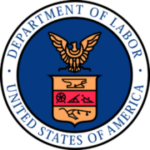

OSHA’s Safe + Sound Campaign is a nationwide opportunity to raise awareness and understanding of the value of proactive occupational safety and health (OSH) programs in all workplaces. Mark your calendars! Safe + Sound Week will take place from August 7-13, 2023. Safe + Sound Week is a nationwide event held each August that recognizes the successes of workplace health and safety programs and offers information and ideas on how to keep America’s workers safe. Registration for Safe + Sound Week opens in early July. We look forward to your participation!
Safe + Sound emphasizes the need for safety programs at small- and mid-sized businesses, which are more likely to have limited resources dedicated to safety. As you know, effective OSH programs can help organizations identify and manage workplace risk before they cause injury or illness, improving sustainability and the bottom line. Safety and health management systems are a critical best practice to ensure that OSH programs achieve significant results and lower risk exposure.
Halt a Hazard
Workplace hazards can emerge over time. Setting aside time to regularly identify and rank safeguards can help keep safety and health hazards under control and keep workers safe.
- Identify ONE hazard to control within your workplace.
- Brainstorm potential controls using OSHA’s Identifying Hazard Control Options: The Hierarchy of Controls.
- Choose and implement which control(s) are most effective for your workplace.
- Download your challenge coin and share that you have completed the Halt a Hazard Challenge via email or on social media using #HaltAHazard and #SafeAndSoundAtWork!
Beat the Heat
Under the OSH Act, employers are responsible for protecting workers from known hazards, including heat. Developing a heat injury and illness prevention plan is vital to keeping workers safe. Highlighting the dangers of heat is an important first step in educating workers and employers on how to prevent and recognize when heat is affecting workers’ health and safety. Since heat illness can be a medical emergency, planning and preparing for heat illness is essential to increase the chances of a positive outcome.
OSHA is sponsoring a Beat the Heat contest to raise awareness about the dangers and hazards of heat exposure in indoor and outdoor workplaces and to motivate workers, employers, and others to take action to prevent heat illness. To participate, stakeholders will create an awareness tool to increase worker and employer knowledge about hazardous heat in the workplace. The contest is open now, and submissions are due by June 9, 2023.
Let Your Voice Be Heard: Safety as a Core Workplace Value Learning Conversation
OSHA is holding a National Learning Conversation that will provide a forum for OSHA to collect insights from workplaces and to identify needs, challenges, and best practices for adoption of safety and health as a core workplace value.
Registration for the National Listening Conversation is now open! The conversation will be held on Wednesday, June 14, 2023 at the US Department of Labor, Francis Perkins Building in Washington, DC. OSHA plans to use this meeting to establish an open dialogue with stakeholders and is interested in receiving feedback. You must register in advance to present comments in-person during the meeting.
IHMM Scholarship Program
The Institute of Hazardous Materials Management is pleased to have created $32,000 in academic scholarships, divided equally between $16,000 for students enrolled in undergraduate or graduate education in approved schools and who are also Student CHMMs, and $16,000 for students enrolled in undergraduate or graduate education in approved schools and who are also Student ASHMs.
IHMM seeks to foster the growth and academic success of students whose courses of education, and participation in one of our Student certifications, will lead to those students becoming fully-certified IHMM credential holders later in their professional lives.
Go to > https://ihmm.org/scholarship/
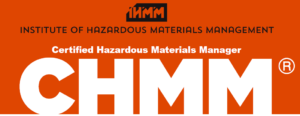
IHMM CHMMⓇ 2022 Salary Survey
IHMM is pleased to release its 2022 salary survey for Certified Hazardous Materials ManagersⓇ [CHMMⓇ] across a broad range of position titles in the CHMMⓇ community of practice.
You may download the CHMM survey here.

IHMM CSHMⓇ 2022 Salary Survey
IHMM is pleased to release its 2022 salary survey for Certified Safety and Health Managers Ⓡ [CSHMⓇ] across a broad range of position titles in the CSHMⓇ community of practice.
You may download the CSHM survey here.

IHMM – 26 Fellows Are Mentors
IHMM Fellows Committee Chair Atanu Das, CHMM, is leading the effort within the IHMM Collaboration networking platform to engage both 26 IHMM Fellows as Mentors and anyone who seeks some assistance as Mentees.
Given the extraordinary experience Fellows have, this is a unique opportunity for IHMM Fellows to help guide more recent certificants in their professional development activities. This article from ASAE magazine outlines how a mentoring program can become more successful – engagement!
IHMM’s Collaboration platform contains a “Mentor Match” module [see below at right] that allows mentors to signup designating the hours, number of mentees, subject areas, and length of time they wish to mentor – as well as allowing mentees to signup requesting assistance in specified areas. The mentor match module does the rest by matching mentors and mentees.

#1 – Recertification Video
#2 Recertification Video
IHMM Recertification Videos
IHMM is pleased to release two YouTube instructional videos about navigating the IHMM recertification process. These step-by-step videos easily enable IHMM certificants to start and complete a recertification application.
While the full recertification cycle is 5 years, IHMM encourages all certificants to start a recertification application and add certification maintenance points as they are earned to make the final submission quick and easy to accomplish.
Retiring? IHMM Invites You to Become an Emeritus
You may have decided, after a long and successful career, to retire from active daily duty. Congratulations. That doesn’t mean you have to completely disengage from your profession. IHMM is pleased to offer Emeritus status to all certificants who will no longer be actively engaged in their communities of practice but who still want to stay in touch. Please let us know when you’re approaching that decision and we will assist you in the credential transition.
Please contact Jimmy Nguyen at [email protected] and he’ll be happy to help you.

National Safety Council
IHMM is a member of the National Safety Council and is pleased to bring this important information to all of our certificants.
NSC News
Silicosis screenings ‘failing’ stone countertop workers in Australia, researchers say
OSHA receives feedback on possible heat standard, asks for more
Talking about mental health at work is hard, LGBTQ+ people say
Psychological safety bill advances in Rhode Island legislature
Study of 3D printing emissions leads to ANSI/CAN/UL standard for testing
Two House Democrats want a hearing on child labor violations
NSC Webinars
June 29 – Creating a High Reliability Organization – Blending Culture & Human Performance Reliability
July 20 – Forklift Safety & Compliance: Your Toughest Questions Answered!
July 27 – Turning Standards into Digital Inspections and Processes: A Practical Guide

American Society of Safety Professionals
IHMM is a member of the American Society of Safety Professionals and is pleased to bring this important information to all of our certificants.
ASSP News
ASSP and VPPPA to Collaborate on Worker Safety
Episode 109: Building an Effective Safety Management System for a Contingent Workforce
Episode 108: How to Identify and Prevent Struck-by Hazards on Your Work Sites
We Can Impact Worker Well-Being
Episode 106: What the Pregnant Workers Fairness Act Means for Safety Professionals and Employers
ASSP Joins With Other Groups in Supporting OSHA and NIOSH Funding for FY2024
ASSP Launches Online Education Series on Standards
ASSP Webinars
June 29 – Hand Safety When Exposed to Energized Equipment
July 6-August 3 – ONLINE COURSE: Implementing an ANSI/ASSP Z10 Management System Based on Systems Thinking
July 6 – August 3 – ONLINE COURSE: Implementing ISO 45001 Course
July 13-August 10 – ONLINE COURSE: Risk Assessment and Management for Safety Professionals
ASSP Standards News
The U.S. TAG to ANSI for ISO TC283 approved ISO 45002 and ISO 45006 as ANSI registered technical reports.
- ISO/ASSP TR 45002-2023: Occupational health and safety management systems – General guidelines for the implementation of ISO 45001:2018
- ISO/ASSP TR 45006-2023: Occupational health and safety management – Guidelines for organizations on preventing and managing infectious diseases
At this point, the adoption process is complete. We will conclude limited public review and then move forward with publication of ISO 45002 and ISO 45006 as an ANSI Registered Technical Report[s].
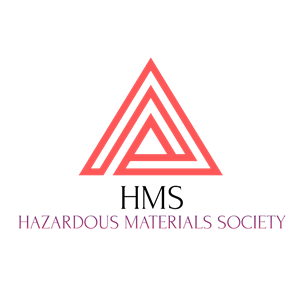
HAZARDOUS MATERIALS SOCIETY
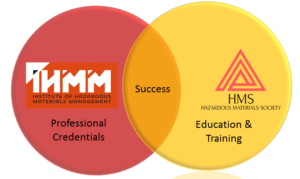
IHMM and HMS
The graphic to the left illustrates the relationship between IHMM and HMS. IHMM formed HMS to serve IHMM’s certificants. IHMM offers a variety of professional credentials and HMS creates education and training programs to serve the applicants and certificants of those credentials.

CHEMTREC, HMS Training Partner, Adds HAZWOPER Refresher Training
This week CHEMTREC has added its HAZWOPER 8-hour Refresher Training to the HMS Daily Training schedule. This HAZWOPER 8-hour Refresher Training is designed for individuals who need to refresh their existing 24-hour or 40-hour HAZWOPER certification. This course meets the requirements outlined in OSHA 29 CFR 1910.120 for 8 (eight) hours of annual refresher training for workers involved in the transport, storage, or handling of hazardous materials or hazardous waste.
See the CHEMTREC HAZWOPER 8-hour Refresher Training here!
CHEMTREC, an HMS training partner, has had 8 courses approved in advance for earning IHMM recertification certification maintenance points. We are pleased to promote these programs as reviewed and approved by the HMS Education and Training Committee. Thank you CHEMTREC, and thank to HMS’ Education and Training Committee.
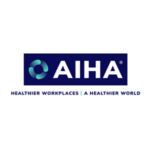
AIHA, HMS Training Partner, Adds Courses for IHMM Certificants
American Industrial Hygiene Association [AIHA] an HMS training partner, has added its first of many courses approved in advance for earning IHMM recertification certification maintenance points. We are pleased to promote these programs in support of IHMM certificants holding the CHMM, CHMP, CSHM, and CSMP credentials. Thank you, AIHA.

Bowen EHS, HMS Training Partner, Adds Courses for IHMM Certificants
Bowen EHS, an HMS training partner, has had 4 courses approved in advance for earning IHMM recertification certification maintenance points. We are pleased to promote these programs as reviewed and approved by the HMS Education and Training Committee, chaired by Diana Lundelius. Thank you Bowen EHS and thank to HMS’ Education and Training Committee.
Thank you Bowen EHS for contributing programs enabling IHMM certificants to engage in professional development and earn important CMPs! All three of the new Bowen EHS programs are available online and on demand.
| Daily | EPCRA Tier II Reporting | Bowen EHS | Online |
| Daily | CHMM Online Review | Bowen EHS | Online |
| Daily | Emergency Management Self-Paced PDC | Bowen EHS | Online |
| Daily | Acute Toluene Exposure Webinar | Bowen EHS | Online |
Thank you Bowen EHS for contributing programs enabling IHMM certificants to engage in professional development and earn important CMPs! All three of the new Bowen EHS programs are available online and on demand.

Respiratory Protection Program Management – Susan Harwood Training Grant
University of Texas Medical Branch, William J. Pate, CHMM
This training course is intended to educate participants on the requirements of developing and implementing a compliant Respiratory Protection Program. The focus of this course will be on topics related to preparation for an infectious disease pandemic. At the end of this training the attendee should be able to:
1) Manage an effective respiratory protection program through proficient application of 29 CFR 1910.134
2) Compare potential routes of exposure
3) Identify and implement potential controls (engineering, administrative, and PPE)
4) List the equipment needed to support fit testing
5) Explain the difference between qualitative and quantitative fit testing
6) Discuss the different types of respiratory protection available
7) Demonstrate correct donning/doffing of respiratory protection
This training course is 7.5 hours and participants will receive a certificate of completion that may be suitable for professional certification maintenance (CSP, CIH, CHMM, CHSP, etc.).
This course will provide 7.5 Continuing Nursing Education (CNE) contact hours. Accreditation statement: University of Texas Medical Branch at Galveston is approved with distinction as a provider of nursing continuing professional development by Louisiana State Nurses Association – Approver, an accredited approver by the American Nurses Credentialing Center’s Commission on Accreditation. LSNA Provider No. 4002176
This training is available only to employees and employers who are subject to OSHA regulatory requirements. Grant-funded training is not available to state or local government employees unless they have occupational safety & health responsibilities (e.g. occupational safety and health trainers, program managers, committee members, or employees responisble for abating unsafe and unhealthy working conditions for their organization). Registration in this course confirms that meet these conditions. This training will include the opportunity to don, doff, and fit test respiratory protection including N95, half-face, full-face, and powered air-purifying respirators. Anyone participating in this training and wanting to put on a respirator agrees that they have been medically cleared by their employer to do so in accordance with OSHA’s Respiratory Protection Standard.
The 8-hour training program is offered at various dates from March through September. For more information and registration for this FREE program go here >> https://www.utmb.edu/ehs/programs/radiation-occupational-safety-program/RPPSHTG2023
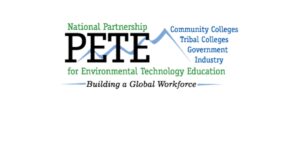
FREE US DOT PHMSA HMIT GRANT HAZARDOUS MATERIALS REGULATIONS AWARENESS TRAINING WORKSHOP – 24 IHMM CMPs
Courses are here> Go to https://hazmatsociety.org/education-training/ Under “Find Training,” Search for NPETE>
These workshops are offered with U.S. DOT PHMSA HMIT (Hazardous Materials Instructor Training) Grant support to the National Partnership for Environmental Technology Education (National PETE). This training is FREE for employees and federal, state, county, and local government employees involved in DOT HazMat Shipping, Receiving and Handling via Ground, Air, and Vessel Transportation.
The workshop curriculum is in accordance with 49 CFR § 172.704 for General Awareness, Function-Specific, Safety, and Security Awareness training requirements. Class size is limited to 10-15 students with mask/social distancing protocols, so act fast. Minimum of 6 attendees is needed to confirm the class.
Registration: Contact Mr. Raymond Davis, CHMM, IHMM Fellow, NPETE US DOT PHMSA HMIT Grant Project Coordinator/Instructor at [email protected]
Please provide Mr. Davis with the following registration information via email to [email protected]
Your name, Your company, Your company address/city/state/zip, Phone number, and Email
Upon receipt of your registration information, the address of the training location will be provided.

Easily Find Courses to Help You Pass IHMM Credential Exams
A core mission of HMS is education and training. Part of that mission includes assembling the best and most effective courses to assist IHMM applicants in passing their IHMM credential exams.
CDGP® Prep Course
CE-1112: CDGP® Exam Prep – Columbia Southern University – Available On Demand
CHMM® Prep Courses
Oct. 24-25 – CHMM Prep Course – PTP Consulting
Daily – CHMM® Online Review – Bowen
Daily – CHMM® Prep Course – Institute of Safety & Systems Management
Daily –Certified Hazardous Materials Managers (CHMM®) Exam Prep – SPAN Exam Prep, Division of ClickSafety
CSHM® Prep Courses
CSMP® Prep Courses
IHMM and HMS Tie Exam Preparation Together for Applicants
Every IHMM certification that requires an examination has a section of its website entitled Examination Preparation.
Connected to the Examination Preparation panel is a companion panel that is Find a Course to Prepare for the Exam.
You see the Find a Course to Prepare for the Exam panel from the CHMM site at left.
When you click on the Find a Course to Prepare for the Exam panel it takes the applicant directly to the HMS site where all CHMM prep courses may be found and chosen.
For the 365 CHMM applicants IHMM had on June 27, 2023, all 365 looking for CHMM prep courses could see and choose their favored CHMM exam prep course. If your course is not on the HMS platform, none of the 365 CHMM applicants could find you.
If you want your CHMM prep course on the HMS platform so it can be found by IHMM CHMM applicants, contact Gene Guilford at [email protected]
HMS Makes Finding Courses to Earn CMPs Easy
Every year more than 1,600 IHMM certificants have to recertify their credentials, evidenced their continuing commitment to improvement and learning to elevate their professional credential.
Earning Certification Maintenance Points [CMPs] is illustrated under Recertification of Your Credential, that includes the Recertification Claims Manual – Appendix A, that details all of the ways a certificant may earn CMPs > https://ihmm.org/recertification-claims/
Having mastered that manual, how does an IHMM certificant find courses to earn CMPs?
HMS has made that simple and easy.
- Go to https://hazmatsociety.org/education-training/
- Scroll down until you see a row of buttons…click on the CMPs button

The system will then generate all of the courses on the HMS E&T platform with IHMM CMPs already attached.
The next developments by the HMS E&T committee will refine available courses’ CMPs by individual credential!
HMS Certified Dangerous Goods Professional [CDGP] Exam Prep
The Columbia Southern University/HMS CDGP prep course is found here on the Hazardous Materials Society [HMS] education and training website > https://hazmatsociety.org/training/ce-1112-cdgp-exam-prep/2022-02-02/
The CSU CDGP exam prep course is delivered entirely online and may be initiated by any CDGP applicant at any time. The CDGP applicant has up to 10 weeks to complete the prep course, though an extension of the 10 weeks may be requested from CSU directly. The CSU CDGP exam prep course contains 8 modules covering the 4 principle texts involved in the CDGP exam, as follows:
- UN Recommendations on the Transport of Dangerous Goods, and
- International Civil Aviation Organization’s Technical Instructions (ICAO TI), and
- International Air Transport Association’s Dangerous Goods Regulations (IATA DGR), and the
- International Maritime Organization’s Dangerous Goods Code (IMDG Code).
More information on the IHMM Certified Dangerous Goods Professional [CDGP] credential may be found here > https://ihmm.org/cdgp/

Applications for the 2023 HMS Scholarship Awards Now Open
The HMS scholarship award is given annually to undergraduate and graduate students whose academic program and research studies have the potential to address the most serious issues in handling hazardous materials, dangerous goods, environmental issues, health & safety challenges. Applicants must be U.S. citizens or permanent residents enrolled in accredited U.S. academic institutions.
DEADLINE TO SUBMIT SCHOLARSHIP AWARD APPLICATIONS IS December 1, 2023. All submissions and associated materials must be submitted using the online form.
Scholarship Winners Will Be Announced at the HMS Annual Meeting.
For More Information, Visit > https://hazmatsociety.org/scholarship/
Donate to HMS
One of the most important projects of the Hazardous Materials Society is our Scholarship Program.
HMS wants to make it as easy as possible for those who cannot always afford to participate in pursuing certification, or keeping up with professional development, or attending great conferences and receiving outstanding training. HMS does not solicit contributions from the general public. HMS does ask IHMM’s certificants and their companies and our education and training vendors to consider a contribution.
Here, through your generosity, you can make a difference in promoting the ability of those who can afford it least to become participants in our communities of practice.
It’s never too late to make a difference, so don’t let this opportunity to make a difference pass you by. Please consider a tax-deductible donation of $250, $500 or what you can to help build HMS’s effort to help others in our communities of practice.
RCM&D Professional Liability Insurance
HMS is proud to have partnered with RCM&D to be able to offer an outstanding comprehensive professional liability insurance program to IHMM certificants. Here, you will find information about this important program offering Environmental Consultants and Engineers Professional Liability coverage. This coverage is intended to add protection for loss stemming from actual or alleged negligent acts, errors and omissions in performing professional services.
For more information see > https://hazmatsociety.org/professional-liability-insurance/
Member Benefits of Hazardous Materials Society
99% of IHMM certificants are aware of the Hazardous Materials Society, which we appreciate. IHMM established the Hazardous Materials Society in order to support and provide services to IHMM certificants.
Did You Know?
Your company’s membership dues for Associate Membership in the Hazardous Materials Society (HMS) are 100% tax-deductible and your participation directly supports scholarship and education/training opportunities for professionals working in hazmat and EHS. Joining as an Associate Member expresses your commitment and your company’s leadership in giving back to our professional community. Join today to claim your tax deduction for the 2020 tax year while expressing your company’s professional affiliation and accessing tools for your marketing and business development plans.
As an IHMM certificant, you pay no dues to take advantage of IHMM’s Foundation at HMS. We do appreciate IHMM’s certificants encouraging their companies to contribute.
To learn more about what HMS is doing now and what they are planning for the future, please see the new Member Benefits page here.
Columbia Southern University
The Hazardous Materials Society [HMS] is a partner of Columbia Southern University. Columbia Southern University is an online university based in Orange Beach, Alabama, that strives to change and improve lives through higher education by enabling students to maximize their professional and personal potential.
A subsidiary of Columbia Southern Education Group, CSU offers online degree programs at the associate, bachelor, master, doctorate or certificate levels in a multitude of areas such as occupational safety and health, fire administration, criminal justice, business administration, human resource management, health care administration and more. CSU also features undergraduate and graduate certificate programs to provide focused training in specialized areas for adult learners.
Click on the CSU graphic at left and learn more about the professional development and degree program opportunities at CSU.
IHMM CONFERENCES FOR 2023
IHMM will attend and support a number of conferences and trade shows throughout 2023, virtually as well as in-person as resources allow. Below are some of the conferences IHMM will support in 2023.
Are there conferences you believe IHMM should attend that do not appear here? If so, let us know by sending an email to [email protected]

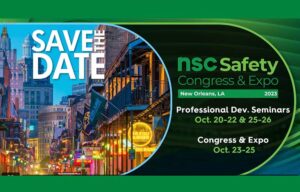

IHMM has a companion organization for which education and training programs are presented and delivered. The Hazardous Materials Society is IHMM’s Professional Association and HMS’ education and training website can be found here. These events are produced independently of IHMM, and their providers have no access to IHMM certification examinations or program information other than that which is publicly available.
IHMM AFFILIATIONS
9210 Corporate Boulevard, Suite 470
Rockville, Maryland, 20850
www.ihmm.org | [email protected]
Phone: 301-984-8969 | Fax: 301-984-1516




